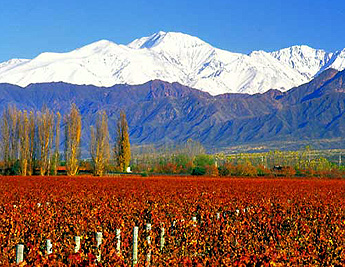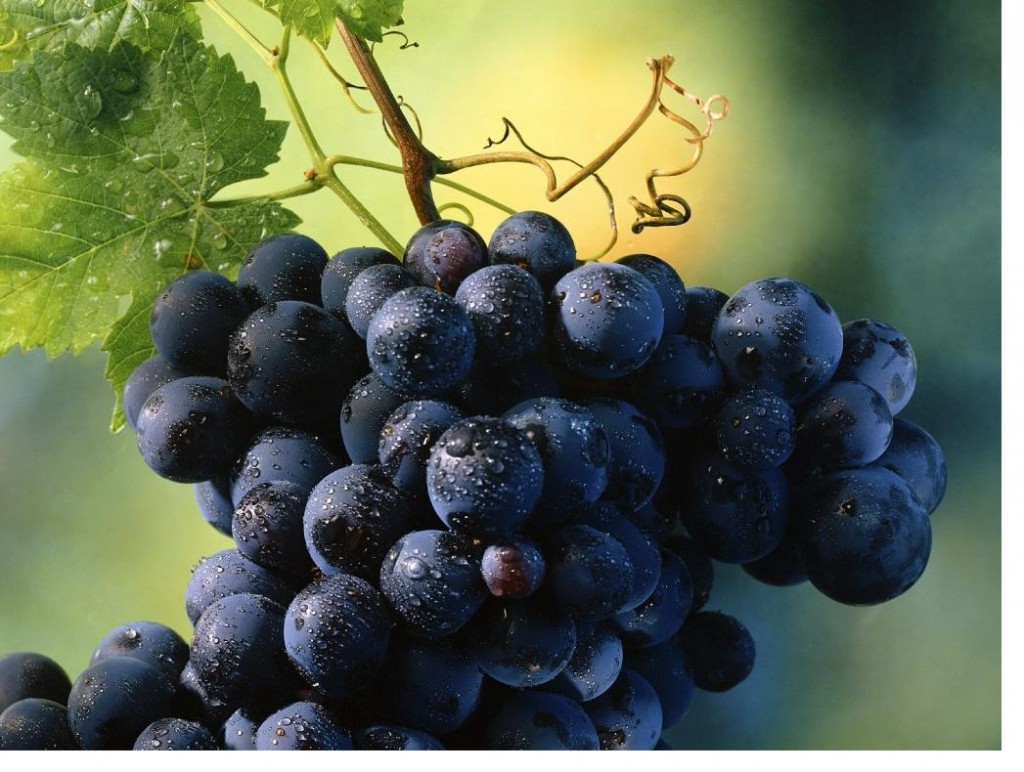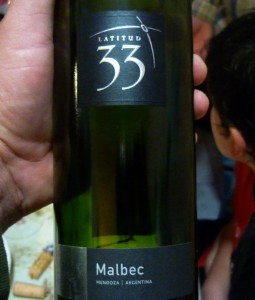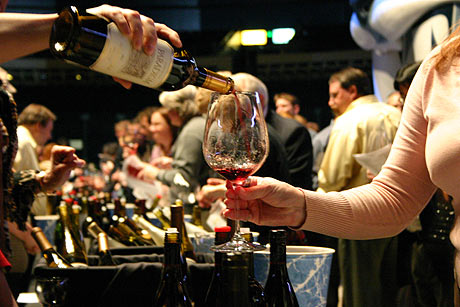Budding wine connoisseurs of all (legal) ages start from the jumping off point of that well known adage, drink and be merry. Argentina has increasingly been getting more attention for its wine production, both in quantity and quality over the past years. This is why tourists, wine lovers, and the wine interested have started flocking to its thriving Capital, to take Wine and sommelier courses in Buenos Aires. Unfortunately, some of us have yet to get the chance to learn all about the world of wines, and so until we can enroll in a class of our own, we will have to start with the basics and work our way up:
 According to Wine for Dummies, an admittedly guilty position i have taken, Argentina is the largest producer of wines in South America and 5th largest in the world. And what comes out of the country is even more impressive. Like the immigration history of the Argentine population, most of the grape-producing vines have come over from Italy and taken and impressive strong root in the wine-making country of Argentina. Provinces such as Mendoza, Salta, and Jujuy are the pride of argentine wines and have attracted many visits by travelers and study abroad students in Argentina! Both the wine culture and the landscape there is beautiful and calming: Being near the mountains but still in a desert area keeps the vineyards warm by day and cool by night, and the ground is dry by nearby rivers from the Andes allow for easy irrigation.
According to Wine for Dummies, an admittedly guilty position i have taken, Argentina is the largest producer of wines in South America and 5th largest in the world. And what comes out of the country is even more impressive. Like the immigration history of the Argentine population, most of the grape-producing vines have come over from Italy and taken and impressive strong root in the wine-making country of Argentina. Provinces such as Mendoza, Salta, and Jujuy are the pride of argentine wines and have attracted many visits by travelers and study abroad students in Argentina! Both the wine culture and the landscape there is beautiful and calming: Being near the mountains but still in a desert area keeps the vineyards warm by day and cool by night, and the ground is dry by nearby rivers from the Andes allow for easy irrigation.
Compared to its neighboring competitor Chile, what really sets Argentine wines apart is its main grape: Malbec. The Malbec grape was originally only used for blending with Merlots and Tannat to make them darker and more full bodied; it is now a celebrated varietal wine (meaning a wine made only from one grape) in Argentina. It has particularly adapted to the Mendoza region and winemakers are toying with getting the same quality. Another great argentine wine is their Cabernet Sauvignon, but many wine professionals agree that sheer production of the argentine Malbec, and it’s rareness as a quality variety has defined argentine wines.
 A little info on the Malbec: The Malbec grape is only successfully produced in Argentina and Cahors, a small wine region in southwest france. Originally from Bordeaux, many theories trace its origin, one (popular but unconfirmed) says that a Hungarian peasant by the name Malbec spread the variety throughout France, others trace it back to northern Burgundy under the original name Côt. In Argentina, Malbec wines have been thriving for over 100 years.
A little info on the Malbec: The Malbec grape is only successfully produced in Argentina and Cahors, a small wine region in southwest france. Originally from Bordeaux, many theories trace its origin, one (popular but unconfirmed) says that a Hungarian peasant by the name Malbec spread the variety throughout France, others trace it back to northern Burgundy under the original name Côt. In Argentina, Malbec wines have been thriving for over 100 years.
Certain qualities jump out with Malbec wine. It is a very full bodied wine, very dark and with a strong concentration of flavors. The skin varies based on climate; in cooler conditions it produces a thick skin that raises acidity and tannins making it a more robust wine, and lower altitudes that have hotter climates lends to a thinner skin grape, more juice and lighter-bodied wines that are meant to be drunk young.
The flavors that often jump out are those of
Dark fruits:
- Plums
- Cherries
- Raspberries
- Currants
Spices: come from the liberal oaking process
- Vanilla
- Anise or licorice
- Tobacco
 It can be difficult to get to know a specific type of wine, or to find a wine you love! If you’re looking for a reasonably priced Argentine wine, this blogger’s wine recommendation would have to be a bottle of the Latitud 33 Malbec which can be found all over Buenos Aires But, as all classes, teachers, wine lovers and professionals will tell you, the only way to get to know a wine is to taste it! So in that spirit, read all you like, but you study abroad students know that one of the best ways to meet Argentina is to reap the fruits of its bounty, err… something like that. For those of you on your way to Argentina, tell us what you think and know about the Malbec in a comment! And for those mente study abroad students in Buenos Aires, whether or not you’re on our Wine Program in Buenos Aires, Argentina, use this information to brush up before our upcoming wine tasting next week which you’ll hear more about in an email! Los requisitos son que ¡disfruten y que hablen castellano durante toda la degustación! Below are some handy wine terms in spanish so you can impress the group with your conocimientos del vino. ¡Que rico!
It can be difficult to get to know a specific type of wine, or to find a wine you love! If you’re looking for a reasonably priced Argentine wine, this blogger’s wine recommendation would have to be a bottle of the Latitud 33 Malbec which can be found all over Buenos Aires But, as all classes, teachers, wine lovers and professionals will tell you, the only way to get to know a wine is to taste it! So in that spirit, read all you like, but you study abroad students know that one of the best ways to meet Argentina is to reap the fruits of its bounty, err… something like that. For those of you on your way to Argentina, tell us what you think and know about the Malbec in a comment! And for those mente study abroad students in Buenos Aires, whether or not you’re on our Wine Program in Buenos Aires, Argentina, use this information to brush up before our upcoming wine tasting next week which you’ll hear more about in an email! Los requisitos son que ¡disfruten y que hablen castellano durante toda la degustación! Below are some handy wine terms in spanish so you can impress the group with your conocimientos del vino. ¡Que rico!
aterciopelado: used to describe older wines that have lost its roughness through tanins and has given it a smooth, pleasant flavor
abierto: used to describe a wine that has a clear color that allows much light to pass through
(vino) blanco: white wine
bodega: winery and wine cellar
botella: bottle
brillante: a characteristic of young wines that give them a strong shine and a clean or fresh taste/look
cata: wine course or professional tasting where the group examines the characteristics of the wine via look (vista), smell (olfato) and taste (gusto)
(vino) común: used to describe a wine that has no varietal specification
cubierto: used to describe a wine that has a dark, opaque color that doesnt allow light to pass through
cuerpo: body of the wine, describing the fullness or lightness of the wine when tasted.
decantar: decant. Gradually pour the wine from the bottle to another container to separate the liquid from t he sediments at the bottom and expose the wine to air to bring out the flavors
he sediments at the bottom and expose the wine to air to bring out the flavors
degustación: wine tasting
enología: enology, the science and study of wine-making
fermentación: fermentation, the process that transforms must into wine by changing the sugars into alcohol
hollejo: skin of the grapes
lágrimas: literally translated as tears, in English wine terms known as the legs of the wine. When the wine is swirled in the glass, the legs refer to the droplets that slide down the side of the glass. The fuller bodied the wine, the longer it takes the droplets to descend. Often said in wine tastings, “this wine as great legs!” which unfortunately is not as sexy sounding when describing las lágrimas.
ligero: light, used to describe a wine that has a weak body, lack of flavor
maceración: softening/soaking, process of keeping the skins of the grapes in the must to give the wine stronger color and aroma
madura/maduración: mature. used to describe a developed wine/process of allowing the grapes to reach their optimal moment of growth
(vino de) mesa: table wine used to accompany foods, lower in quality and price
mosto: must, the juice from the grapes before it goes through the fermentation process
notas (de…): notes of or hints of, used to describe the tastes, usually subtler, found in the wine
paladar: the palate of the mouth, where most flavors of the wine hit.
postgusto: also known as retrogusto, it is used to describe the taste that lingers in the mouth after drinking a wine
redondo: said to describe a full bodied wine
(vino) rosado: a rosé wine, pink in color, made of red wine grapes but less red and with a different flavor because the skins are taken out before the fermentation process
 sabroso: a taste defined by the variety of flavors and characteristics that make a smooth and tasty wine
sabroso: a taste defined by the variety of flavors and characteristics that make a smooth and tasty wine
tánico: used to describe a wine with a flavor defined by a high level of tannins
taninos: tanins, which exist in grape skins, sedes, stems, and even the barrels used to age the wine. Drawing the tannins out it dependent on the winemaking process involved. Tannins are marked by astringency (think of that sense of dryness or almost grittiness lets on the tongue) and bitterness. It is often maintained that tannins get less noticeable with age.
(vino) tinto: red wine
trasiego: a process of moving the wine around to decant and oxygenize it.
uva: grape
varietal: varietal, used to describe a wine made out of one particular variety of grape
vino: wine
viñedo: vineyard
vid: grape vine
vinicultura: viniculture, wine production and wine growing
vinificación: everything related to the wine making process
Rachel Sherman

